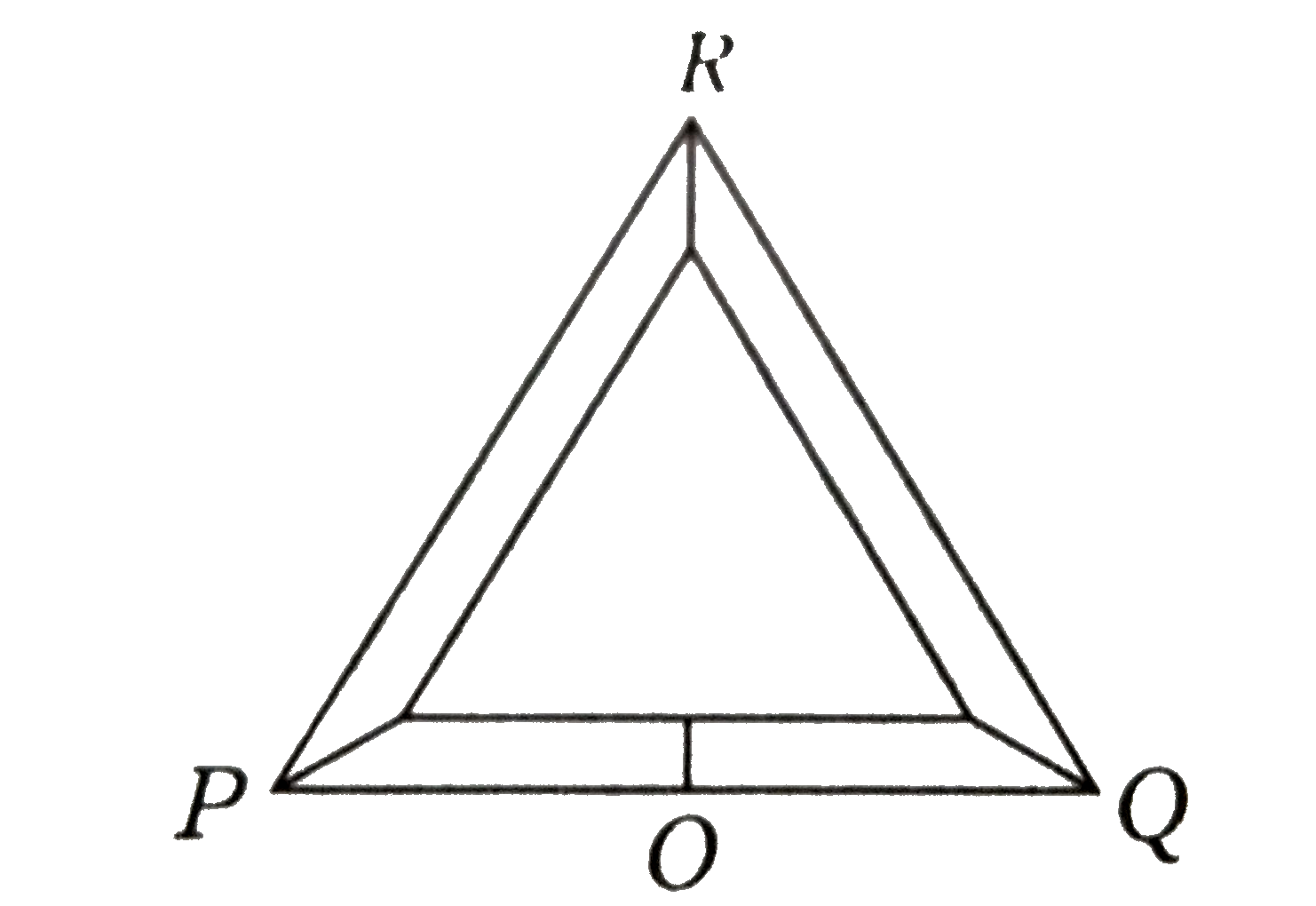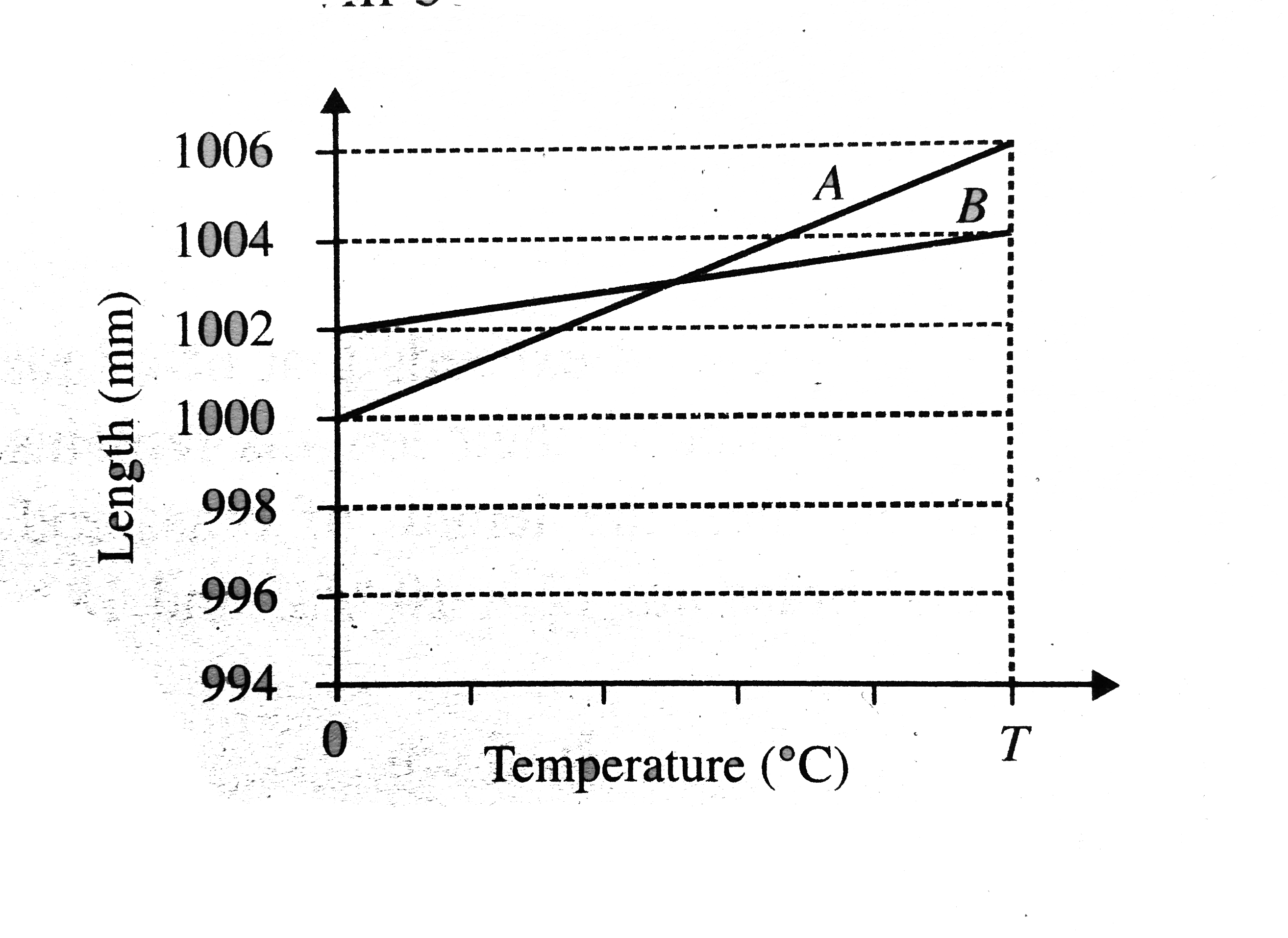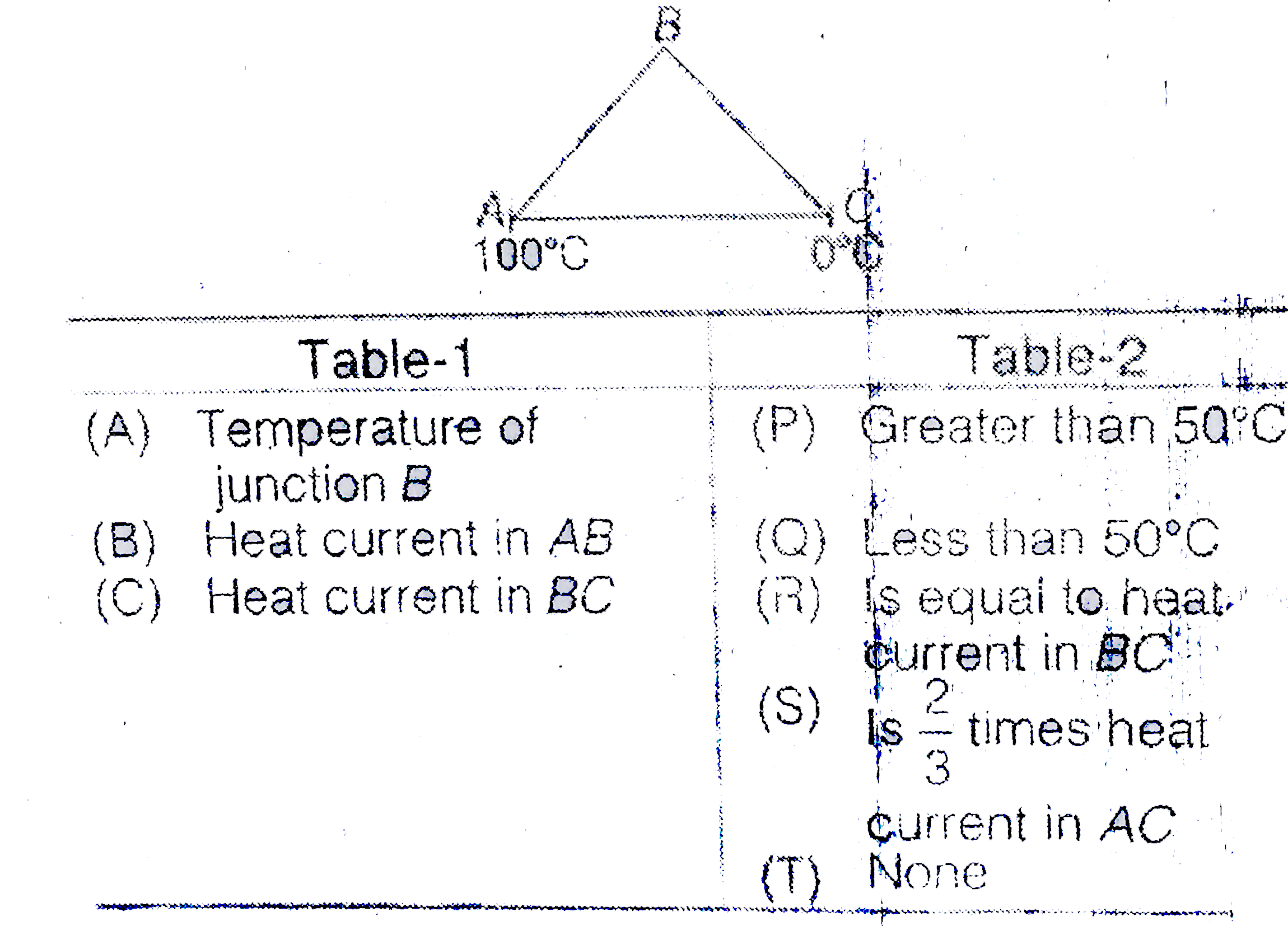Three rods of equal of length are joined to from an equilateral triangle ABC. D is the midpoint of AB. The coefficient of linear expansion is α1 for AB and α2 for AC and BC . If the distance DC remains constant for small changes in temperature,

α1=α2
α1=2α2
α1=4α2
α1=12α2
The correct Answer is:C
Step by step video & image solution for Three rods of equal of length are joined to from an equilateral triangle ABC. D is the midpoint of AB. The coefficient of linear expansion is alpha_(1) for AB and alpha_(2) for AC and BC . If the distance DC remains constant for small changes in temperature, by Physics experts to help you in doubts & scoring excellent marks in Class 12 exams.
Related Playlists
- BOOK - RESNICK AND HALLIDAYCHAPTER - TEMPERATURE, ZEROTH LAW OF THERMODYNAMICS AND THERMAL EXPANSION EXERCISE - PRACTICE QUETIONS (More than One Correct Choice Type )7videos
TEMPERATURE, ZEROTH LAW OF THERMODYNAMICS AND THERMAL EXPANSION
- BOOK - RESNICK AND HALLIDAYCHAPTER - TEMPERATURE, ZEROTH LAW OF THERMODYNAMICS AND THERMAL EXPANSION EXERCISE - PRACTICE QUETIONS (Matrix- Match )3videos
TEMPERATURE, ZEROTH LAW OF THERMODYNAMICS AND THERMAL EXPANSION
- BOOK - RESNICK AND HALLIDAYCHAPTER - TEMPERATURE, ZEROTH LAW OF THERMODYNAMICS AND THERMAL EXPANSION EXERCISE - PROBLEMS24videos
TEMPERATURE, ZEROTH LAW OF THERMODYNAMICS AND THERMAL EXPANSION
- BOOK - RESNICK AND HALLIDAYCHAPTER - RIGID BODY DYNAMICS-IIEXERCISE - PRACTICE QUESTIONS (Integer Type)2videos
RIGID BODY DYNAMICS-II
- BOOK - RESNICK AND HALLIDAYCHAPTER - THE FIRST LAW OF THERMODYNAMICSEXERCISE - PRACTICE QUESTIONS ( INTEGER TYPE )3videos
THE FIRST LAW OF THERMODYNAMICS
Knowledge Check
- Question 1 - Select One
An equilateral triangle ABC is formed by joining three rods of equal length and D is the mid-point of AB. The coefficient of linear expansion for AB is α1 and for AC and BC is α2. The relation between α1 and α2, if distance DC remains constant for small changes in temperture is
_E01_117_Q01.png) Aα1=α2Bα1=4α2Cα2=4α1Dα1=12α2
Aα1=α2Bα1=4α2Cα2=4α1Dα1=12α2 - Question 1 - Select One
Two rods , one of aluminium and the other made of steel, having initial length l1 and l2 are connected together to from a sinlge rod of length l1+l2 . The coefficient of linear expansion for aluminium and steel are αa and αs for AC and BC . If the distance DC remains constant for small changes in temperature,
AαsαaBαaαsCαs(αa+αs)Dαa(αa+αs) - Question 1 - Select One
Three rods of equal l are joined to from an equilateral triangle PQR.O is the mid-point of PQ. Distance OR remains same for small change in temperature. Coefficient of linear expansion for PR and RQ is same i.e., α2 but for PQ is α1. Then
 Aα2=3α1Bα2=4α1Cα1=3α2Dα1=4α2
Aα2=3α1Bα2=4α1Cα1=3α2Dα1=4α2 - Question 1 - Select One
The coefficient of linear expansion varies linearly from α1 and α2 in a rod of length l. Find the increase in length when its temperature is increased by ΔT.
A(α1+α22)lΔTB(α1+α2)lΔTC(α1+α22)lΔTD(α12+α2)lΔT - Question 1 - Select One
If L1 and L2 are the lengths of two rods of coefficients of linear expansion α1 and α2 respectively the condition for the difference in lengths to be constant at all temperatures is
AL1α1=L2α2BL1α2=L2α1CL1α1=L2α2DL1α2=L2α1 - Question 1 - Select One

The variation of length of two metal rods A and B with change in temperature is shown in Fig. the coefficient of linear expansion αA for the metal A and the temperature T will beAαA=3×10−6/∘C,500∘CBαA=3×10−6/∘C,222.22∘CCαA=27×10−6/∘C,500∘CDαA=27×10−6/∘C,222.22∘C - Question 1 - Select One
The coefficient of linear expansion of a rod is α and its length is L. The increase in temperature required to increase its legnth by 1% is
A1αB110αC150αD1100α
Similar Questions
The coefficient of linear expansion varies linearly from α1 and α2 in a rod of length l. Find the increase in length when its temperature is increased by ΔT.
View SolutionThree rods of equal length of same material are joined to form an equilateral triangle ABC as shown in figure. Area of cross-section of rod AB is S, of rod BC is 2S and that of AC is S. Then match the following.
 View Solution
View SolutionIn an equilateral ΔABC,D is the midpoint of AB and E is the midpoint of AC. Then, ar(ΔABC):ar(ΔADE)=?
 View Solution
View Solution

